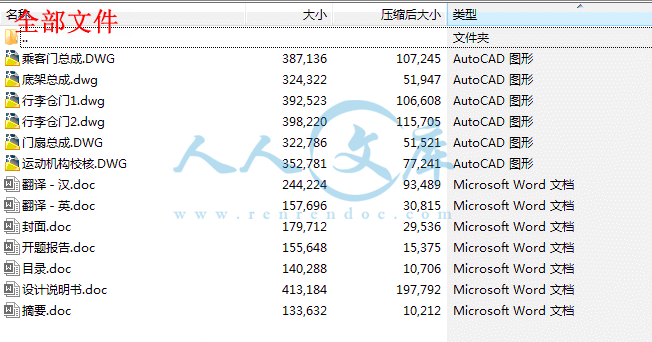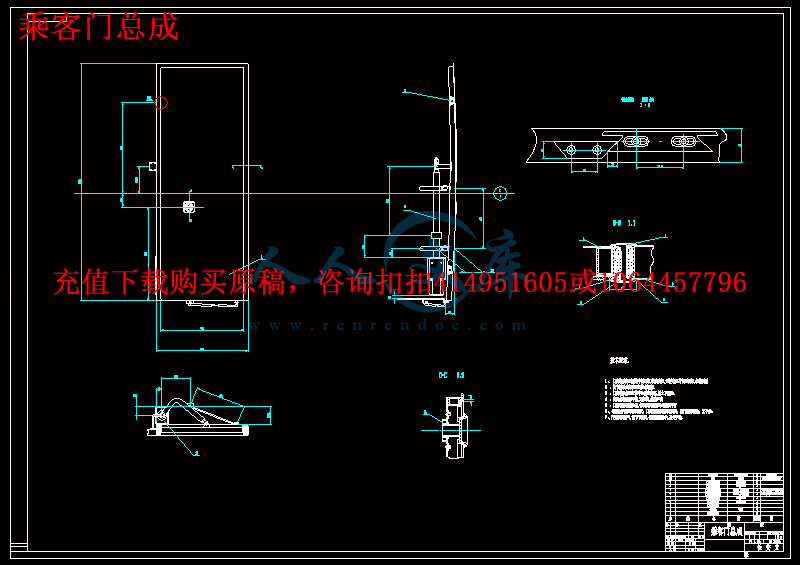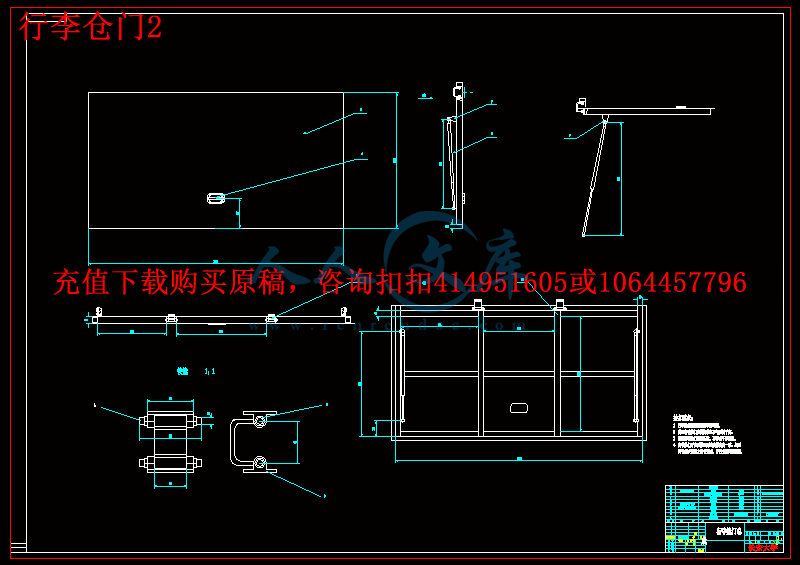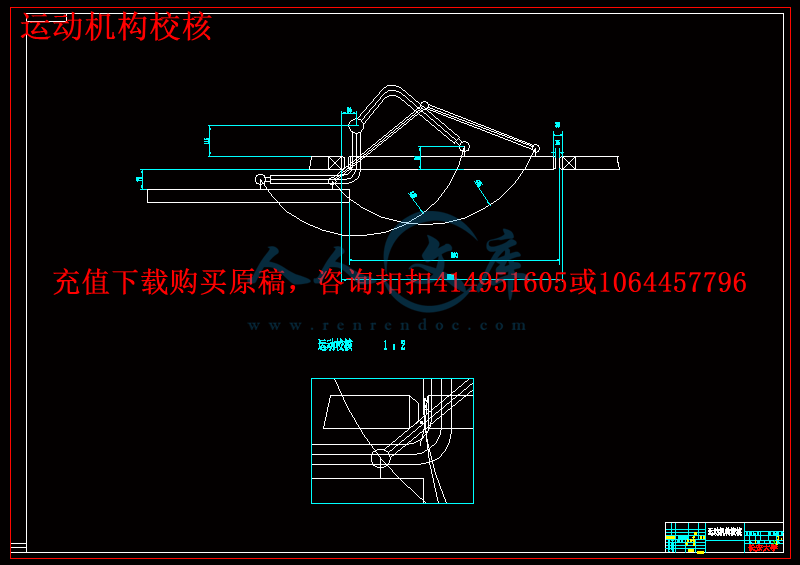摘 要
乘客门是客车的重要组成部分,是乘客上下车的通道,对客车的整体造型也起着重要的协调作用。随着我国汽车技术的发展,我国汽车厂家已普遍采用了优势突出的外摆式乘客门。外摆式乘客门是一种无轨道的移出车门,门扇靠回转臂支撑,依靠转轴的转动带动门扇作近似于平行移动的运动,因而也称为平移门。
本文为中型客车的外摆式乘客门和行李舱门的设计。分析了外摆式乘客门和行李舱门的结构和工作原理,确定其各部分的尺寸及主要零部件的选型及安装。讨论了国内外汽车附件工业发展的情况比较。AUTOCAD软件是当今世界上一种主流的设计软件之一。在本设计中应用了AUTOCAD软件制作乘客门和行李舱门。
关键词: 外摆门,行李舱门, 安全,AUTOCAD。
Abstract
Passenger door is the important department of the coach, is the route way for the passengers. And assort with the whole coach sculpt. With the development of our vehicle technology, the domestic vehicle factory has already adopted the outer turning service door. It has much more predominance. The outer turning service door is the door which has no tram road and parallel move out of the coach, the door was supported by the circumrotate arm. By the rotation of the circumrotate axes, the door is moving close to the parallel move. Thus this door is called translation door.
This paper introduces the design of the medium passenger train coach’s outer turning service door and the engine hatch door. Analyzed the structure and operating principles of the outer turning service door and the engine hatch door, determined the size of its parts and major components of the models and installation. Discussed the development of the vehicle annex industry. AUTOCAD software is one of a mainstream in the world of design software. During the design, the AUTOCAD software has been sued to product passenger door and baggage compartment door.
KEY WORDS: outer turning service door, baggage compartment door, safe, AUTOCAD。
目 录
第一章 绪论························································1
1.1 乘客门类型选择················································1
1.1.1乘客门主要结构形式·········································1
1.1.2 外摆门的优点··············································2
1.2 CAD 技术在汽车开发中的应用····································2
1.2.1CAD技术的发展············································2
第二章 国内外外发展情况比较·······································3
2.1客车附件工业的特点···········································3
2.2 目前国内客车车身附件的状况及与国外发达国家之间的差距·········3
2.3发展建议·····················································6
第三章 外摆式乘客门设计···········································7
3.1 外摆式乘客门的结构···········································7
3.2乘客门泵选型··················································8
3.2.1 门泵主要技术参数··········································9
3.2.2 门泵安装与调试············································10
3.3运动机构设计及校核···········································10
3.3.1用作图法确定车门的运动轨迹·······························10
3.3.2运动校核··················································13
3.4 外摆门的密封·················································14
3.4.1几种典型外摆式乘客门密封结构·····························14
3.4.2改进型密封结构···········································16
3.4.3密封结构选定 ···········································17
3.5 外摆式乘客门的制作···········································18
3.5.1制作工艺·················································18
3.5.2预装与调试················································18
第四章 发动机舱门设计·············································18
4.1舱门结构组成·················································18
4.2零部件选型····················································18
4.2.1锁 具 的 选 择················································18
4.2.2气弹簧支撑机构·············································20
4.3铰链设计·····················································21
设计评价分析····················································23
致 谢··························································24
参考文献··························································25
一 绪 论
1.1客车乘客门类型选择
乘客门是客车的重要组成部分,是乘客上下车的通道,对客车的整体造型也起着重要的协调作用。客车外形是影响客车性能的一个重要因素。乘客门是车身外形的一个组成部分,它不仅与客车的动力性、经济性密切相关,而且直接影响客车外形的美观与动感。随着车速的不断提高,客车的空气动力性问题越来越突出。过去我国采用较多的是折叠式车门,由于车门内陷而增加了汽车的空气阻力,产生风流噪声,而且由于车门缝隙大,密封困难,在形式中产生强烈的振动噪声和漏尘,从而严重影响乘坐舒适性。导槽滚轮式乘客门虽然无内陷,但是在车身侧壁有导槽。因此,在的许多高档旅游客车和长途豪华客车上出现了一种使车身表面平整光滑的乘客门,外摆门成为代表乘客门发展的一种趋势。近年来,伴随着出城乡人民群众生活水平的不断提高和高速公路建设的完善,我国中、高档客车取得了长足的发展,外摆门已经在我国客车生产中得到广泛应用。







 川公网安备: 51019002004831号
川公网安备: 51019002004831号